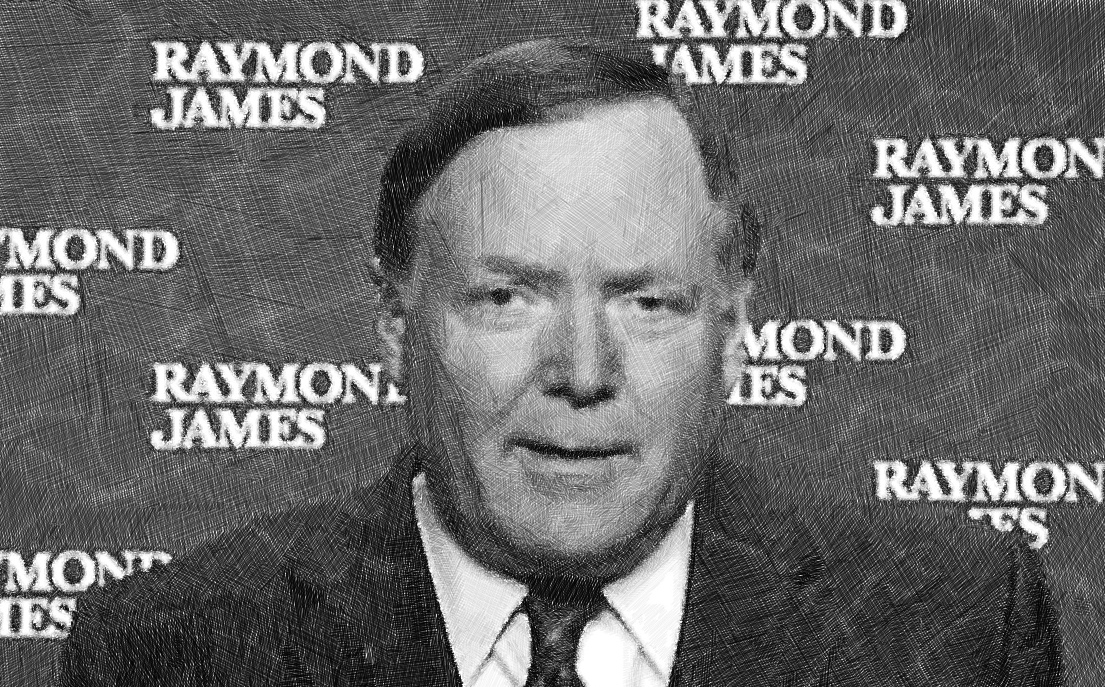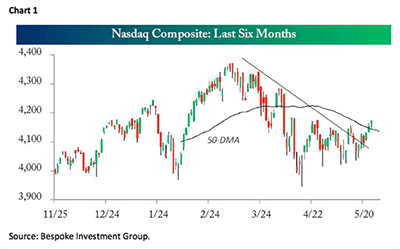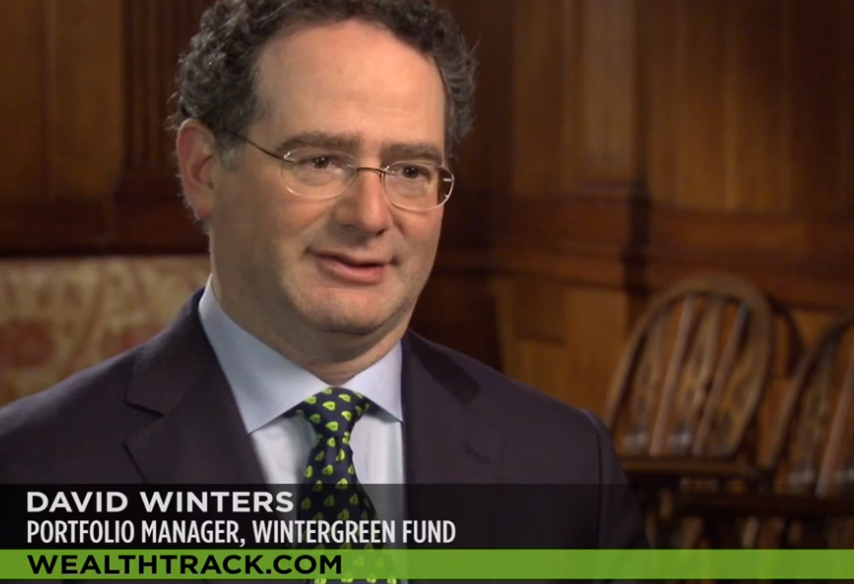“Washington Week”
by Jeffrey Saut, Chief Investment Strategist, Raymond James
May 27, 2014
Washington Week is an American public affairs TV show airing on PBS since 1967. The show is unique in that it does not embrace boisterous debates, but rather its discussions follow a path of civility and moderation. This morning, however, I am not talking about the television show Washington Week, but my stint inside the D.C. Beltway last week. I was back in my old stomping grounds to attend the Raymond James Financial Services’ (RJFS) national conference, give a keynote speech at the conference, and host a two-hour breakout session with my friend Richard Bernstein. After more than 20 years as Merrill Lynch’s chief investment strategist, Rich became eponymous captain of his now five-year old Richard Bernstein Advisors. The week began with last Monday’s trip to Capitol Hill, as well as the Sam Rayburn building just south of Capitol Hill, to see old friends and renew contacts. As I have stated in my recent presentations, “Away from the headline names that everyone knows, I am seeing more cooperation just below those headliners than I have seen in the past five years.” Such thoughts were echoed in an article in the Washington Post last week titled “The biggest winner in the primaries: U.S. Chamber of Commerce.” Rob Engstrom, National Political Director of that organization, wrote in a letter:
At the beginning of 2014, we outlined a goal of engaging early on behalf of candidates committed to fighting for free enterprise and American prosperity. In last night’s primaries in Idaho, Georgia, Kentucky, Oregon and Pennsylvania, the Chamber supported the candidate with a demonstrated record on issues critical to job creation across the country. And thanks to the voices and votes of many of you, those efforts paid off.
On Tuesday I found myself listening to Erskine Bowles, businessman/politician and co-author of the deficit reduction plan Simpson – Bowles. He noted the consensus liked the plan, even though 99% of Congressional people can’t tell the difference between a balance sheet and an income statement. He continued by saying that while the plan was not adopted, we have done some of the easy stuff and dumb stuff proposed in the plan. Increasing taxes on folks making $400,000+ was easy. Making across-the-board spending cuts using the Sequester was stupid. “Stupid” because those spending cuts all came on the discretionary side of the ledger with no cuts in the entitlement programs. When companies make spending cuts they do so with surgical precision in places where cuts were needed, not randomly across the board. He then proceeded to list five “tuff stuff” steps that need to be taken before things become dire.
1) Get healthcare cost under control. He said we spend twice as much on healthcare as other countries, which would be okay if our healthcare was twice as good as other countries. But according to him that is not what’s happening with the U.S. ranking 25th in terms of life expectancy and infant mortality. In 1980 we were spending 10% of the Federal Budget on healthcare, currently that number is 25% and rising. To make things right, healthcare costs need to slow to the growth rate of GDP.
2) Get defense spending under control. We spend more on national defense than the next 12 countries combined.
3) Make the tax code efficient. The tax code nets about $1.3 trillion. The reason it nets so little is due to “back door spending.”
4) Get Social Security solvent. Over the next 10 years, as the boomers retire, social security will have a negative $800 billion deficit. When Roosevelt implemented the program he was smart, life expectancy was 63 years, and you were not eligible for Social Security until you were 65. Now life expectancy is 79.
5) Do something about our national debt and the impact of compounding interest on that debt. Currently, we are spending roughly $230 billion per year on interest to service our debt; and, that’s at artificially low interest rates. At normalized rates that figure would be $650 billion. If we don’t do something, it will be over $1 trillion.
He ended by noting that we can’t solely grow ourselves, and tax ourselves, out of the problem. We also can’t “cut spending” our way out of the problem without killing the economy. He ended with a plea to only elect people that will address these problems.
I really liked his remarks, and while I am no Erskine Bowles, I do know how the Washington Waltz plays. Unless you get someone like a Roosevelt, or for that matter Ronald Reagan, Washington moves glacially and at the margin. So while I would certainly like to see many of his points adopted, it is probably not going to happen anytime soon.
Yet, the stock market seems to be sensing things are getting better on ALL fronts as many of the major indices tracked out to new all-time highs again last week. Even the weak NASDAQ Composite has broken above its recent downtrend line, and traveled back above its 50-day moving average (see chart 1). Likewise, the weak NASDAQ Biotech Group has done the same (Chart 2) and the NASDAQ Internet Group is attempting to follow, but so far has not bettered its 50-DMA (Chart 3). Meanwhile, the economically sensitive D-J Transportation Average (TRAN/7986.58) has notched another new all-time high, but the D-J Industrials (INDU/16606.27) did not do the same. That could mean a very short-term upside non-confirmation leading to an attempt to sell stocks off early this week. Also arguing for a downside attempt early this week is the very short-term internal energy indicator, which became exhausted last week. The longer-term internal energy indicator, however, still has oodles of energy, so any weakness should be contained.
Circling back to Richard Bernstein and my two-hour breakout session, Rich began by discussing the American Industrial Renaissance (AIR) theme and the mutual funds/ETFs he manages that play to that theme. In addition to the two Eaton Vance funds (EV Equity Strategy Fund and EV All Asset Strategy Fund), he talked at some length about the Richard Bernstein American Industrial Renaissance Fund (FYENMX/$9.16). After his opening remarks we both discussed the equity markets and then moved to the Q&A, which lasted about an hour and a half of our two-hour session. There were far too many other topics discussed in the Q&A to relate in this report, but the overriding theme was that we are in a secular bull market. I will share the stock I spoke of at our session; it was Iridium (IRDM/$7.55/Strong Buy). And while I was telling the Iridium story, our fundamental analyst was upgrading the shares using these words:
We are upgrading Iridium to Strong Buy following the company's recent capital raise that, while painfully dilutive, should enable Iridium to complete the construction and launch of its NEXT satellite constellation without additional requirements for capital. With the cloud of capital funding removed, we believe investors will increasingly focus instead on the company's compelling growth opportunity and the prospect for a decade of 50% free cash flow in the post-launch period (for more information see the analyst’s company comment, published on May 20, 2014).
I believe Rich and my session was recorded, and I know my keynote address was, so if you want to see either of them, they should be available soon.
The call for this week: According to Lowry’s, “US equity markets are testing fresh highs once again. Prior moves into and above the 1880-1890 area in SPX (188.0-189.0 in SPY) have seen a dissipation in volumes, potentially an indicator that buyers are stepping away as prices move higher. A lack of interested buyers at these levels then subsequently allows sellers to push prices back into the prior range. It would be positive to see volume expand this week with prices above 1890 to indicate that investors are committing to higher prices, and by corollary, the outlook for equities is improving.” And, that looks to be what’s happening this morning with the SPX preopening futures better by some 8 points on the Poroshenko win in the Ukraine and more evidence China is not going to implode. Today we get the U.S. Durable Goods Orders (-0.8%e), Case-Shiller HPI (0.7%e), Service PMI Flash (55.4e), and one Fed speaker this evening, Lockhart (8:10 p.m.).
Copyright © Raymond James


















